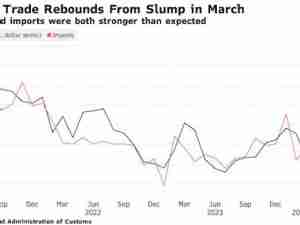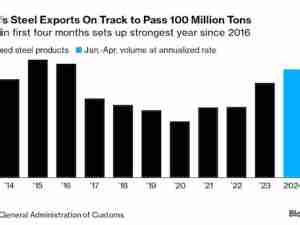Two Percent a Distant Dream as ECB Price Focus Questioned
By: Jeff Black and Catherine Bosley | Jan 04 2016 at 06:34 AM | International Trade
With the European Central Bank set to miss its inflation target for a fourth year in 2016, officials are being drawn into an unwanted debate about their key gauge.
Policy makers insist they’re standing by their mandate to keep the annual rate of price gains just under 2 percent over the medium term even as that becomes increasingly hard to achieve. A weak economic recovery, demographic decline and slumping energy costs mean a sustained return to that level isn’t forecast before the end of 2017.
While academics and economists begin to argue that targeting headline price gains in a disinflationary global environment is a losing game, there’s little indication of an overt rethinking at the Frankfurt-based ECB. Instead, officials from President Mario Draghi down are underlining the possibility of more stimulus, while subtly enhancing the weight given to measures of inflation that strip out the impact of oil.
“As an institution, the ECB values its credibility more than anything else so it’s not likely they’ll change anything formally,” said Frederik Ducrozet, an economist at Banque Pictet & Cie SA in Geneva. “That said, in the context of such low oil prices the focus will be very much on core inflation and that could even mean a sort of unannounced shift in their reaction function.”
Slower Pickup
Data due Tuesday will show inflation was 0.4 percent in December, up from 0.2 percent in November, according to the median estimate in a Bloomberg Survey. While officials were predicting an uptick in the coming months, a renewed drop in oil prices looks likely to at least partly thwart those forecasts.
Input costs and output charges at euro-area factories continued to decline in December, according to a survey of purchasing managers by Markit Economics. At the same time, manufacturing activity accelerated at the fastest pace in 20 months as rising new orders propelled output.
The inflation rate in Germany probably rose to 0.4 percent in December from 0.3 percent, according to a separate survey. That report is due at 2 p.m. Frankfurt time.
Instead of the 1 percent euro-area average for 2016 that the ECB forecast on Dec. 3, analysts at banks including Barclays Plc and Nomura International Plc see price gains coming in at just 0.5 percent. New ECB projections aren’t due until March.
Referencing core inflation is one way for the ECB to be able to keep attention on the “real” path of prices, even though it’s not part of the interpretation of its mandate. As a sign that the measure has become a spur for action, Draghi referred to it on Nov. 12 as part of the case in favor of a stimulus package that was ultimately approved the following month and added at least 360 billion euros ($391 billion) in asset purchases.
That said, policy makers are resisting any notion that the price-stability definition in place since 2003 should be subject to review. For Executive Board member Yves Mersch, that’s a debate for much later.
“You definitely don’t have this discussion during a crisis, but afterward,” he said in an interview with International Bankers’ Forum published on Dec. 28. “The definition of price stability can’t be seen as a moving target.”
Core inflation stood at 0.9 percent in November and is forecast to have risen to 1 percent last month, according to the Bloomberg survey. Markit will publish surveys of purchasing managers on Monday and Wednesday, providing insights into the 19-nation economy, followed on Thursday by Eurostat’s unemployment report and the European Commission’s gauge of economic confidence.
Straining Central Banks
The question of whether the practice of inflation targeting itself, which has become the dominant monetary-policy regime around the world, is still fit for purpose has become the subject of debate almost everywhere academics and practitioners gather these days. Theory heavyweights like former Bundesbank president Axel Weber and the Bank of England’s Chief Economist Andy Haldane have questioned out loud whether a serious rethink needs to happen.
Other central banks are already straining within their established policy frameworks. The Reserve Bank of New Zealand, where inflation targeting was pioneered in the early 1990s, cut rates in December to spur price gains, even though some economists said it wasn’t warranted domestically.
In Sweden, where the Riksbank has eased policy to fend off deflation amid a housing boom, policy makers will this month learn the results of a study on their framework conducted by former Bank of England Governor Mervyn King and Carnegie Mellon University’s Marvin Goodfriend. The report will, among other goals, evaluate the suitability of the central bank’s inflation target.
Meanwhile, Draghi insists that the ECB will secure the return of price growth toward 2 percent “without undue delay,” according to a speech in New York in December. For that to be credible, he concedes that an addition to the 1.5 trillion-euro quantitative-easing program may still be needed.
Alexander Koch, an economist at Raiffeisen Schweiz in Zurich, says the ECB is more likely to prefer to print more money in pursuit of its inflation target than admit it’s no longer realistic.
“It’s more dangerous if you adjust targets in the short term.,” he said. “The credibility of a central bank depends on its target and it takes a long time to anchor it.”









